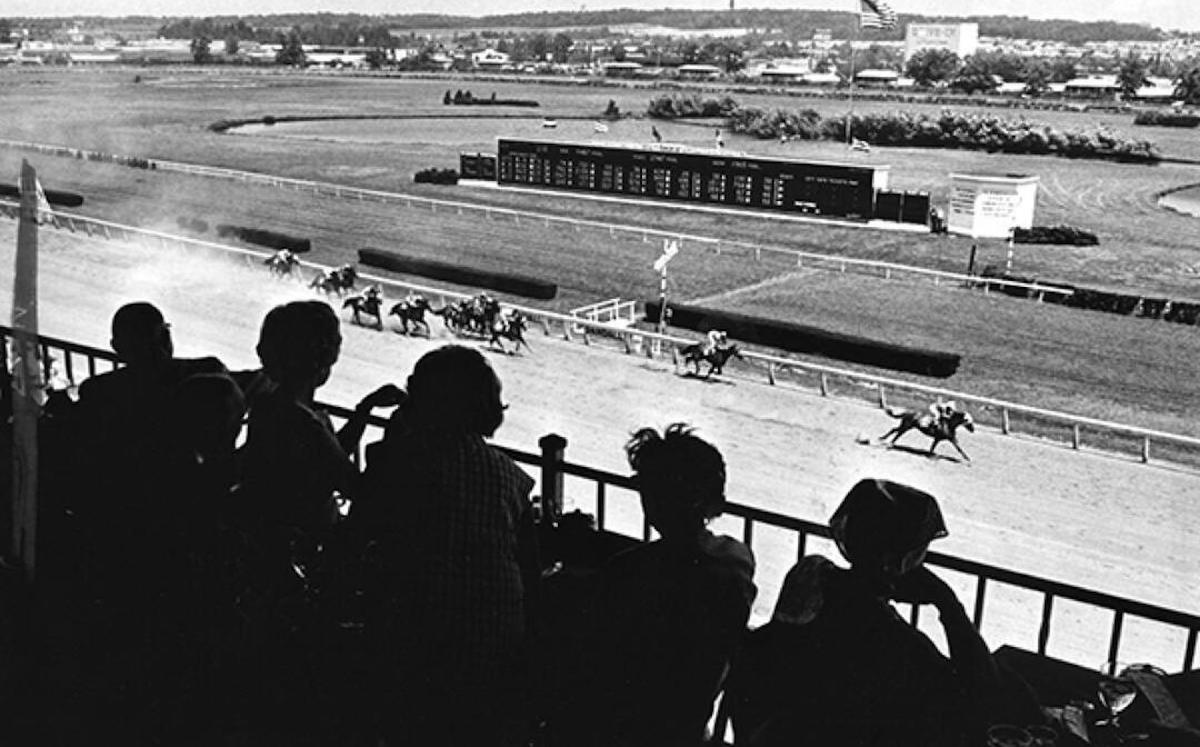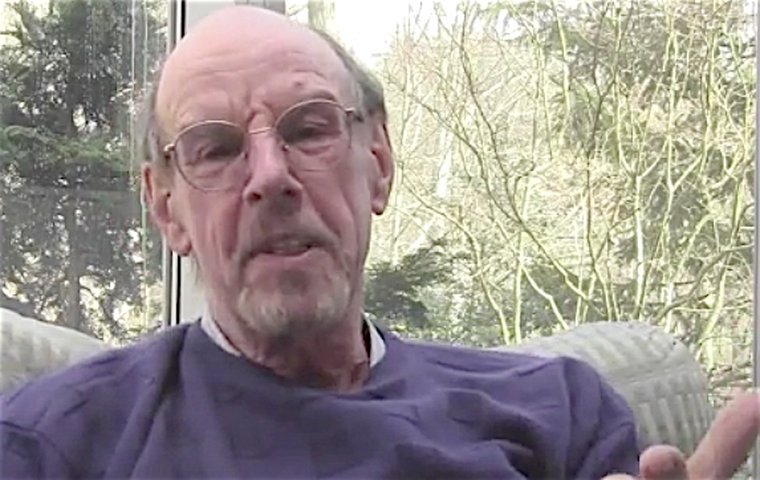
Unmissable interview with speed figures guru Andrew Beyer, who revolutionised US handicapping with the ground-breaking system pioneered in the 1970s
Andrew Beyer would fit very nicely into the vivid, high-jinks world of Damon Runyon, find a place among all the guys and dolls on Broadway, rubbing shoulders with Rusty Charley, Little Isadore, Dave the Dude and the Lemon Drop Kid.
Runyon would of course give him a name, this Harvard scholar with the railbird sensibilities. Here comes Andy the Abacus, his head full of numbers and his pockets full of C-notes, always looking for an edge and usually finding it. Runyon knew well which way the dice rolled and once wrote a short story titled All Horse Players Die Broke, but in this tale Andy the Abacus beats those odds.
Beyer’s name is indivisible from the sport in the US, with his speed-figure system a lingua franca for everyone who ever carefully smoothed out the crumpled pages of a formsheet, bit hard on a pencil, furrowed their brow and began the never-ending search for the next winner.
From wiseguys to hotwalkers, from the Jockey Club suite to the paddockside bar, they all know what a 92 Beyer figure means and how to rationalise it. Andy the Abacus has done all the work for them.
Daily Racing Form: Best Beyers of 2023
“I had an early affinity for gambling,” he says, his crackly voice loud and clear down the line from his home in Washington DC, an old man at the age of 80 but irresistibly young at heart.
“Pinball, cards, the usual things. I had a feeling the racetrack would appeal. I pestered my father for a long while and he took me to the track for the first time at the age of 12. Randall Park in Cleveland.”
You never forget the first time, or the way that the first time made you feel. That was it for Beyer; he was gone. To be fair, he was going that way anyway.
“If I had led a normal life,” he says, nodding towards the road more travelled, “I was on course to be a journalist. I edited my school paper, my mother was a fanatic about proper English usage, my father was a college professor.
‘I knew I was doomed’
“But I knew I was doomed. My academic career was inglorious, I disregarded my studies. I knew that it would mean the end of my chance of a Harvard diploma, but I still skipped my final exam on Chaucer and went to the track instead.”
Beyer drove 200-odd miles to New York to bet Amberoid in the 1966 Belmont. The horse won. Of course it did.
And Beyer became a journalist anyway, although not the type his pedigree suggested. He wrote sport for the Washington Post, moved across town to write about racing for the Washington Daily News, then returned to the Post in 1978 to take his career all the way to the wire. His speciality would have appealed to both Runyon and Chaucer; Andy the Abacus meets the Horseplayer’s Tale.
“I liked hanging out at the track with the horseplayers, I was much more interested in those degenerate characters than in the Whitneys and the Phippses,” he says, the word ‘degenerate’ rolling off his tongue with relish for the first but not the last time, Beyer absorbed by and readily absorbed into his own kind.
“I wanted to write about the gambling side, about issues that affected that colourful segment of the racetrack, the underside, if you like. I was paid to go to the track, and I wanted to understand the game as best I could. I thought I’d try to find a way to win at handicapping.”
The notion of using time as a basis of handicapping was not original. The cigar-puffing Yorkshireman Phil Bull had built the ratings system Timeform on the back of the stopwatch in the mid-1940s, and Beyer adopted that philosophy. In the early 1970s, there were no computers, no databases. The long drawn-out graft of longhand was the only way.
“God knows how many hours,” says Beyer. “My house was filled with stacks of the Daily Racing Form. I concentrated on the Maryland circuit – the whole Beyer Speed Figures system arose from countless $3,000 claimers at Bowie Park.
‘I applied basic maths’
“I had to build a relationship between time and distance, had to translate a time into a number. I applied basic maths, created a chart that assigned a numerical rating to each time at each distance, so that I could compare 1m13s at six furlongs with 1m26s at seven furlongs, say.
“There are two components to the process, a track variant – how fast or slow the track is on a given day – and a speed rating. Apply one to the other and you get the speed figure. As time went on, I was pretty confident I was on track to becoming a fairly successful horseplayer.”
It took six years, incorporated an expansion of the system to account for horses from all over the country travelling to run in Florida through the winter, a mile-high stack of old newspapers and a hundredweight of candles burned at both their ends, and Beyer had his magic bullet locked and loaded.
“When all was said and done, I had as great an edge as any horseplayer ever had,” he says. “I gambled intensively and I did very well.”
Beyer’s kitchen-table mathematics then provided the plot and character for the groundbreaking book Picking Winners, after he had resolved the dilemma of giving away his edge to everyone by reverting to type.
 “I was a writer – I had a deep-seated urge to write a book. So I wrote it. I thought it would appeal to such a slim portion of the buying public that it wouldn’t hurt what I was doing. To my shock, and to my publisher’s shock, it turned out to be quite a success.”
“I was a writer – I had a deep-seated urge to write a book. So I wrote it. I thought it would appeal to such a slim portion of the buying public that it wouldn’t hurt what I was doing. To my shock, and to my publisher’s shock, it turned out to be quite a success.”
The genie was out of the lamp, and granting a trifecta of wishes to every fellow degenerate who bought in. Some serious horseplayers read the book and wanted to collaborate with Beyer, notably his pal Mark Hopkins, who remains one of the team of seven who compile the figures today.
For every believer, though, there were half-a-dozen sceptics, increasing in number the further up racing’s hierarchy you went.
“A lot of people – owners, trainers, plenty of handicappers – just didn’t think the same way,” he explains. “They believed in that mysterious quality ‘class’, which doesn’t exist. They thought speed figures weren’t important.”
Beyer was well ahead of his time. Give him a red felt-tip pen and a sheaf of paper and he’d probably be able to put a precise figure on how far ahead he was. The racing world would catch up, slowly.
In 1991, he collaborated with his friend Steven Crist to provide speed figures for the short-lived newspaper, the Racing Times. Later that year its owner Robert Maxwell fell off his boat and the Racing Times sank just as fast, but in 1992 Beyer speed figures began to appear in the Daily Racing Form – aptly, considering their genesis – and they continue to do so.
They have become the industry standard, and even if a bettor has no idea who Beyer is, he knows what his figures mean. Beyer’s kindred spirits have benefited immeasurably from his life’s work.
‘They couldn’t ignore them’
“I joined the Establishment,” laughs the old renegade. “Now, even if people thought the numbers were a bunch of crap, they couldn’t ignore them.”
The most gratifying development for Beyer came when all the big shots, all the arch-sceptics, all the Whitneys and the Phippses and their successors, began to use Beyer speed figures in their stallion advertising. They had finally become the accepted measuring-stick of ability, a three-figure Beyer putting two fingers up to the nebulous notion of class, a $100,000 stallion fee justified by all the lonely intensity invested in those $3,000 claimers at defunct Bowie.
The highest substantiated Beyer figure is the 128 assigned to Ghostzapper in 2004, although the man himself reckons that it may have been a little fluky, gained as it was in a four-horse race in the slop.
Flightline earned a 126 for his 19-length romp in the 2022 Pacific Classic, while back in the day the sizzling sprinter Groovy posted two 130+ Beyers, although those came before the 1990 watershed that Beyer considers the onset of the true historical record, and he does not have the confidence to endorse them for eternity. As a broad rule of thumb, a Beyer of 114 and above indicates a special talent.
He ran the numbers on Secretariat’s Belmont Stakes win and came up with 139, which seems as plausible a way as any of trying to get a handle on what Big Red did that day.
It’s probably the way Beyer would prefer to remember the great horse, as although he admits to being enthralled by Secretariat, and got a big kick out of his portrayal in the Hollywood treatment of the colt’s career, sentimentality has never been part of the game for him.
He views the sport through a gambler’s eye, the hard-bitten, hard-earned assessment of the two-dollar bettor rather than the florid descriptions of the horsey crew, and that aspect has always underpinned his writing. The degenerate may have switched seats and become the man on the inside but he still seethed and burned in print.
Beyer once called the mighty mare Zenyatta a ‘phony’, talked down the unbeaten, adored Personal Ensign, hinted as strongly as the lawyers would allow at the prevalence of drug use in the sport.
‘No room for sentiment’
“You can’t be a fan of a horse, a jockey, a trainer if you’re a journalist,” he says, unmellowed by age. “I admire good examples of all of them, but there’s no room for sentiment.
“I always took my writing very seriously, laboured over my columns. When you write for a paper of the quality of the Washington Post, you have to take it seriously.
“I am very attuned to a horse’s form, so when I saw certain trainers regularly bringing performances from horses that defied logic, it was only right to highlight it. After all, Jorge Navarro and Jason Servis went to jail for it. That was my job, the journalist’s job.”
Beyer no longer has his column, having relinquished it at the end of 2016 as the mainstream press steadily relinquished its interest in racing. It would be a mistake to assume, though, as he enters his ninth decade, that Andy the Abacus is losing his grip on the numbers.
“I’m at my desk every morning, everyone on the team is assigned four or five tracks to cover, and I see no need to retire as long as my faculties are still intact,” he says, that crackly voice breaking into laughter.
“I stopped writing my columns as I didn’t need two jobs. I might occasionally do a piece for the Post or the Form, as I loved writing and I do miss it. But I love doing the speed figures just as much.”
Beyer shares that desk with an Eclipse Award, a physical reminder of the industry’s acceptance of his life’s work, official confirmation of his transition from upstart outsider to racing royalty. He was honoured in 2016 with the Award of Merit, the gift of which is regarded as the highest honour in the sport, in tandem with long-time collaborator Steven Crist.
“It’ll never move from my desk. I never expected it or anything like it,” he says. “To me it means that the industry has acknowledged the impact of Beyer speed figures, and I found that – and still do – very gratifying indeed.”
‘I’d rather take my chance at the windows’
He has never owned a horse – “I am too well acquainted with the realities of racing economics,” he says, drily, “I’d rather take my chance at the windows” – and spends his time away from the job seeing the world from the seat of his bicycle.
He has slogged his way up the Tour de France monoliths Alpe d’Huez and Mont Ventoux and will keep going while his own personal Beyer figure improves from 80 to 81 and beyond.
“I do miss the social life of the racetrack, though,” he adds, as the time of the first race draws near. “Being with my degenerate friends in the grandstand, those were good days.”
Spoken like a true railbird. Runyon would recognise the sentiment. All horse players die broke? Not anymore; not with Beyer’s help.
• Visit the Daily Racing Form website
‘I was almost ready to give up but I didn’t quit’ – Javier Castellano Q+A
What They're Thinking: Steve Asmussen – Curlin brought us to a completely different level
Eoin Harty: I would put down synthetic tracks instead of dirt
From Harlan’s Holiday and Ashado to Justify and Authentic: how Starlight Racing shares in success
View the latest TRC Global Rankings for horses / jockeys / trainers / sires


